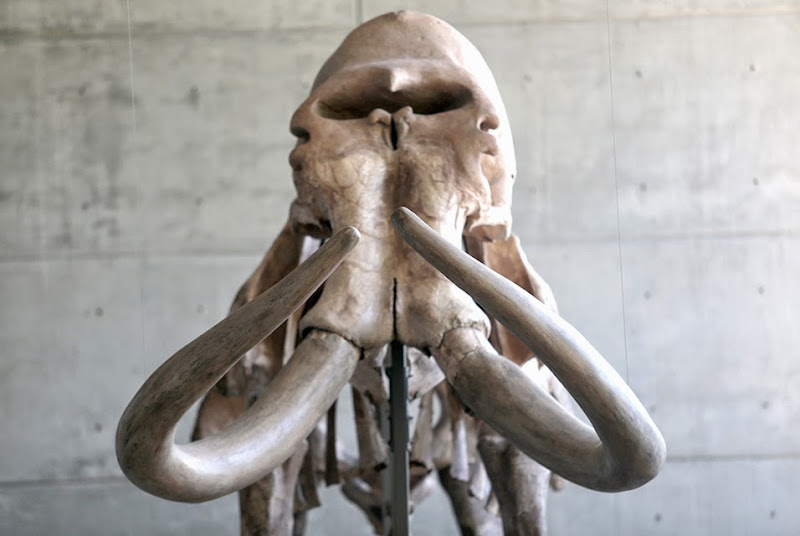At the inauguration of the exhibition Fossils: life in stone, Teresa Franco, general director of the National Institute of Anthropology and History (INAH), pointed out all the accomplishments in the discovery, investigation, conservation and diffusion of the rich paleontological, archaeological and historical patrimony of Mexico as the principal tasks of the Institute.

Acapulco, Mexico. The fossilized bone structure of the mammoth was found in archaeological excavations carried out at the beginning of 1990 in the State of Mexico [Credit: AFP/Pedro Pardo]
The collection is composed of 120 fossils representing diverse species that demonstrate Earth’s evolution, these fossils belong to different geological eras; an example being a Columbian mammoth (almost five meters [16.4 feet] tall), a saber toothed tiger and several marine organisms.
Through the extraordinary pieces, Teresa Franco added, the visitor can travel through diverse geological eras. “In the Paleozoic era, which started about 541 millions of years ago, the first aquatic life forms were developed, first as plants and then as animals that colonized the land. This period ended with the creation of the supercontinent Pangea which gave birth to the Mesozoic era, producing no great changes in the planet’s surface or climate, thus allowing the development of vertebrates like dinosaurs, and afterward birds and mammals”.
After a massive extinction 65 million years ago, the mammals spread dominating the Earth for the following millions of years in the Cenozoic era, period in which the slow fracture of Pangea and the crash between plaques gave shape to the world as we now know it, added the director of INAH.
“The extinction of thousands of species has marked the history of life on Earth. There are diverse hypothesis about these biological phenomenon, including climate changes, evolution processes and even the fall of a meteorite. Guerrero has an impressively rich stock of fossils and I believe that with this exposition, young children, adults and other specialists will find the subject very attractive”.
Of the 100 pieces exhibited, 90 per cent are originals, which elevate the importance of this exposition complemented by graphics depicting fauna, flora, and the distribution of the continents and oceans in each of the geological eras.
Source: INAH via Art Daily [July 20, 2014]